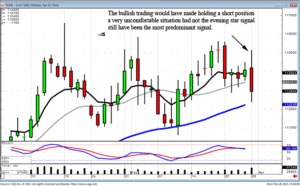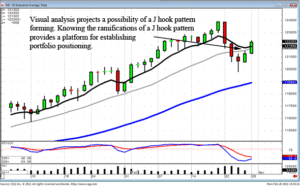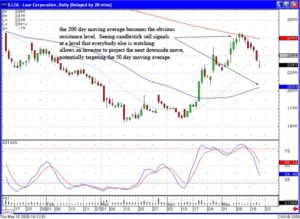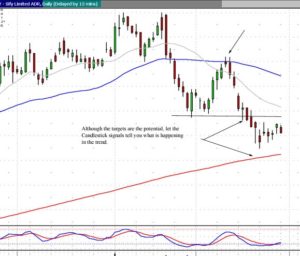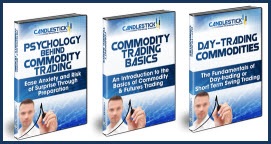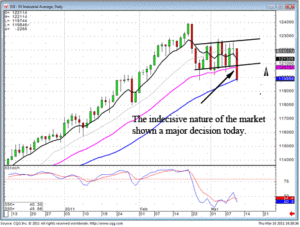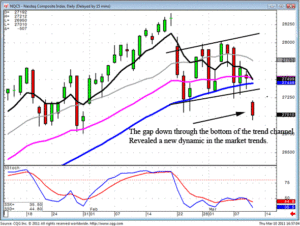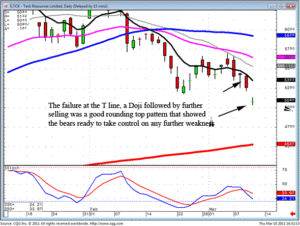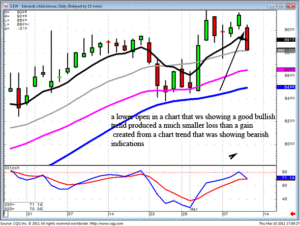![]() Futures Trading for Beginners. Exactly what are futures, and how is it different from the stock market?
Futures Trading for Beginners. Exactly what are futures, and how is it different from the stock market?
![]() Paper Trading Futures. Get your strategy down on paper and fully understand the potential of futures trading. Become comfortable with the terminology and select your software program.
Paper Trading Futures. Get your strategy down on paper and fully understand the potential of futures trading. Become comfortable with the terminology and select your software program.
![]() Balancing Risk and Reward. The trades can be risky but the rewards can be very nice. So why the bad reputation?
Balancing Risk and Reward. The trades can be risky but the rewards can be very nice. So why the bad reputation?
![]() Factors to consider when choosing futures markets. Consider liquidity and be diversified.
Factors to consider when choosing futures markets. Consider liquidity and be diversified.
![]() Do you have what it takes to Trade Futures? The necessary Traits to Trade Futures.
Do you have what it takes to Trade Futures? The necessary Traits to Trade Futures.
![]() Planning for Success. Set your Plan for Success
Planning for Success. Set your Plan for Success
![]() Futures Orders Defined. What are Market, Limit, and Stop orders.
Futures Orders Defined. What are Market, Limit, and Stop orders.
![]() Reading the Future with Japanese Candlesticks
Reading the Future with Japanese Candlesticks
![]() Futures Exchanges; know where you are doing business
Futures Exchanges; know where you are doing business
![]() Futures Trading Advisors; Who is Going to Help YOU?
Futures Trading Advisors; Who is Going to Help YOU?
Education for Commodity and Futures Trading for Beginners – 10 Part Lesson
PCF (Personal Criteria Formulas) For TeleChart Software
PCF’s written in TeleChart searches for The Major Candlestick Signals
The following criteria for Major Candlestick Signals is provided for your convenience. Follow TeleChart instructions for adding search criteria, then ‘cut-and-paste’ the formulas below.
You will also find these posted in the Candlestick Forum club on TeleChart. Join Steve and fellow candlestick traders by adding the Candlestick Forum club to your directory.
Doji
(O = C )
Doji Yesterday
(O1 = C1 )
Doji and Near Doji
(ABS(O – C ) <= ((H – L ) * 0.1))
Bullish Engulfing
((O1 > C1) AND (C > O) AND (C >= O1) AND (C1 >= O) AND ((C – O) > (O1 – C1)))
Bearish Engulfing
((C1 > O1) AND (O > C) AND (O >= C1) AND (O1 >= C) AND ((O – C) > (C1 – O1)))
Hammer
(((H-L)>3*(O-C)AND((C-L)/(.001+H-L)>0.6)AND((O-L)/(.001+H-L)>0.6)))
Hanging Man
(((H – L) > 4 * (O – C)) AND ((C – L) / (.001 + H – L) >= 0.75) AND ((O – L) / (.001 + H – L) >= .075)))
Piercing Line
((C1 < O1) AND (((O1 + C1) / 2) < C) AND (O < C) AND (O < C1) AND (C < O1) AND ((C – O) / (.001 + (H – L)) > 0.6))
Dark Cloud
((C1 > O1) AND (((C1 + O1) / 2) > C) AND (O > C) AND (O > C1) AND (C > O1) AND ((O – C) / (.001 + (H – L)) > .6))
Bullish Harami
((O1 > C1) AND (C > O) AND (C <= O1) AND (C1 <= O) AND ((C – O) < (O1 – C1)))
Bearish Harami
((C1 > O1) AND (O > C) AND (O <= C1) AND (O1 <= C) AND ((O – C) < (C1 – O1)))
Morning Star
((O2>C2)AND((O2-C2)/(.001+H2-L2)>.6)AND(C2>O1)AND(O1>C1)AND((H1-L1)>(3*(C1-O1)))AND(C>O)AND(O>O1))
Evening Star
((C2 > O2) AND ((C2 – O2) / (.001 + H2 – L2) > .6) AND (C2 < O1) AND (C1 > O1) AND ((H1 – L1) > (3 * (C1 – O1))) AND (O > C) AND (O < O1))
Bullish Kicker
(O1 > C1) AND (O >= O1) AND (C > O)
Bearish Kicker
(O1 < C1) AND (O <= O1) AND (C <= O)
Shooting Star
(((H – L) > 4 * (O – C)) AND ((H – C) / (.001 + H – L) >= 0.75) AND ((H – O) / (.001 + H – L) >= 0.75)))
Inverted Hammer
(((H – L) > 3 * (O – C)) AND ((H – C) / (.001 + H – L) > 0.6) AND ((H – O) / (.001 + H – L) > 0.6)))
Recent Formulas Submitted by our Candlestick Forum Members
These have not been tested by the CandlestickForum
J-Hook Pattern
((L1 = MINL4) OR (L2 = MINL4) OR (L3 = MINL4) ) AND
( (MAXC3 < MAXC4.3)) AND
( (H3 = MAXH15.4) OR (H4 = MAXH15.4) OR (H5 = MAXH15.4) OR (H6 = MAXH15.4) OR (H7 = MAXH15.4) ) AND (((MAXH4.3 – MINL4) / (MAXH4.3 – MINL21.3) > .23) AND ((MAXH4.3 – MINL4) / (MAXH4.3 – MINL21.3) < .62) ) AND
((AVGH3.5) > (AVGH3.8 ) AND (AVGH3.8 ) > (AVGH3.13) AND (AVGH3.13) > (AVGH3.18 ))
Belt Hold
C > O
AND L = MINL10
AND ((C – O) / (H – L)) > .5
AND ((C1 – L) / (H – L) > .6)
AND (H – L) > .2 * ((H5 – L5) + (H4 – L4) + (H3 – L3) + (H2 – L2) + (H1 – L1))
AND H > L1 AND C < H1
Belt Hold
(C > O) AND (H > L1) AND (L = MINL10) AND
((C – O) / (H – L) > .5) AND
(ABS(C1 – L) / (H – L) > .5) AND
( (H – L) > (((H – L + ABS(C1 – H) + ABS(C1 – L)) / 2 + (H1 – L1 + ABS(C2 – H1) + ABS(C2 – L1)) / 2 + (H2 – L2 + ABS(C3 – H2) + ABS(C3 – L2)) / 2 + (H3 – L3 + ABS(C4 – H3) + ABS(C4 – L3)) / 2 + (H4 – L4 + ABS(C5 – H4) + ABS(C5 – L4)) / 2) / 5))
Three Outside Down Pattern
((C2>O2)AND(O1>C1)AND(O1>=C2)AND(O2>=C1)AND((O1-C1)>(C2-O2))AND(O>C) AND (C
Three Outside Up Pattern
((O2>C2)AND(C1>O1)AND(C1>=O2)AND(C2>=O1)AND((C1-O1)>(O2-C2))AND (C>O)AND (C>C1))
Three Inside Up Pattern
((O2>C2)AND(C1>O1)AND(C1<=O2)AND(C2<=O1)AND((C1-O1)<(O2-C2))AND(C>O)AND(C>C1)AND(O>O1))
Three Inside Down Pattern
((C2>O2)AND(O1>C1)AND(O1<=C2)AND(O2<=C1)AND
((O1-C1)<(C2-O2))AND(O>C)AND(C>C1)AND (O< p=””><>
Three White Soldiers PCF
(C>O*1.01) AND(C1>O1*1.01) AND(C2>O2*1.01) AND(C>C1) AND
(C1>C2) AND(OO1) AND(O1O2) AND
(((H-C)/(H-L))<.2) AND(((H1-C1)/(H1-L1))<.2)AND(((H2-C2)/(H2-L2))<.2)
Three Black Crows PCF
(O > C * 1.01) AND (O1 > C1 * 1.01) AND (O2 > C2 *
1.01) AND (C < C1) AND (C1 < C2) AND (O > C1) AND (O < O1) AND
(O1 > C2) AND (O1 < O2) AND (((C – L) / (H – L)) < .2) AND
(((C1 – L1) / (H1 – L1)) < .2) AND (((C2 – L2) / (H2 – L2)) < .2)
SIMPLE MOVING AVERAGE SCANS
Crossing Up Through 50SMA (you may replace the 50 with other MA’s)
AVGC50 <= H AND AVGC50 >= L
Price under 50 Moving Average Yesterday – Over 50 Moving Average Today
C > AVGC50 AND C1< AVGC50
Bounce off 50MA Yesterday
AVGC 50.1 <= H AND AVGC50.1 >= L AND C > C1 AND C > AVGC50
Price Crossing over the 50MA and 20MA Today
(C > AVGC50 AND AVGC20 ) AND (C1 < AVGC50.1 AND AVGC20.1 )
Crossing Up Through 200SMA
AVGC200<=H AND AVGC200>=L
Stochastics Moving Up Through 20
STOC12.3.1 < 20 AND STOC12.3 > 20
April 2007 -New Formulas submitted by fellow Candlestick Forum Members for TeleChart Users
Thanks to everyone who emails their formulas on Candlestick Personal Criteria Formulas. These are not tested by us and provided as a courtesy. Please contact the Worden Brothers at Telechart2007 for all pcf support.
BULLISH PATTERNS
Abandoned Baby
C2
H1>L2 AND
(C1+O1)/2>=((H1+L1)/2)*0.40 AND
(C1+O1)/2<=((H1+L1)/2)*0.60 AND
ABS(C1-O1)<= (H1-L1)*10 AND
L>H1 AND
C
*Sort in ascending order*
Breakaway
C4
C3
C>O AND
C>H3
*Sort in ascending order*
Concealing Baby Swallow
O3=H3 AND
C3=L3 AND
O2=H2 AND
C2=L2 AND
C1
O=H AND
C=L AND
H>H1 AND
L
*Sort in ascending order*
Doji Star
C1
L>H1 AND
ABS(C-O)<= (H-L)*0.05 AND
((C+O)/2)-L >= (H-L)*0.40 AND
((C+O)/2)-L <= (H-L)*0.60
*Sort in ascending order*
Hammer/Dragonfly Doji
((((CO)*O))*(-1))-L>=(H-L)*0.75 AND
(H-L)>(AVGH21-AVGL21)
*Sort in ascending order*
Harami Cross
ABS(C1-O1)>(H1-L1)*0.50 AND
C1
(((C+O)/2)-L) > (H-L)*0.40 AND
(((C+O)/2)-L) < (H-L)*0.60 AND
ABS(C-O) < (H-L)*0.20
*Sort in ascending order*
Homing Pigeon
C1
ABS(C1-O1)>(H1-L1)*0.50 AND
H
C
*Sort in ascending order*
Inverted Hammer/Gravestone Doji
ABS(C-O) <= (H-L)*0.25 AND
((C+O)/2) – L <= (H-L)*0.25 AND
H-((C+O)/2)>= (((C+O)/2)-L)*0.34
Ladder Bottom
O4>C4 AND
O3
C>O AND
O>O1
*Sort in ascending order*
Mat Hold
C4>O4 AND
ABS(C4-O4)>(H4-L4)*0.50 AND
C3
C2>L4 AND
C1>L4 AND
C>C4 AND
C>O AND
(H-L)>(AVGH21-AVGL21) AND
C2
ABS(C2-O2)<= ABS(C4-O4)*0.75 AND
ABS(C2-O2)<= ABS(C4-O4)*0.75
*Sort in descending order*
Matching Low
(C1ABS(C1-O1)>(H1-L1)*0.50 AND
C
*Sort in ascending order*
Meeting Lines
C1
O1
CC>C1*0.99
*Sort in ascending order*
Rising Three Methods
(C4>O4) AND
(H4-L4)>(AVGH21.4-AVGL21.4) AND
C2
ABS(C3-O3)<=ABS(C4-O4)*0.75 AND
ABS(C2-O2)<= ABS(C4-O4)*0.75 AND
ABS(C2-O2)<= ABS(C4-O4)*0.75 AND
C>O AND
(H-L)>(AVGH21-AVGL21) AND
C>C4
*Sort in descending order*
Stick Sandwich
C2
L1>C2 AND
C
C
*Sort in ascending order*
Three Inside Up
ABS(C1-O1) >= (H2-L2)*0.70 AND
ABS(C2-O2)>(H2-L2)*0.50 AND
C1>O1 AND
C2
C>O AND
C>C1
*Sort in ascending order*
Three Outside Up
ABS(C2-O2)>(H2-L2)*0.50 AND
C2
O1
C>C1
*Sort in ascending order*
Tweezer Bottom
L=L1 AND
ABS(C-O)ABS(C1-O1)>=(H1-L1)*0.90 AND
(H1-L1)>=(AVGH20-AVHL20)*1.3
*Sort in ascending order*
BEARISH PATTERNS
Advance Block
(H-L)>(AVGH21-AVGL21) AND
ABS(C1-O1)>(H1-L1)*0.50 AND
ABS(C2-O2)>(H2-L2)*0.50 AND
C>C1 AND
C1>C2 AND
O1> O2 AND
O1< C2 AND
O>O1 AND
O
(H1-L1) < (H2-L2)*0.80 AND
(H-C)>(O-L) AND
(H1-C1)>(O1-L1)
*Sort in descending order*
Belt Hold
C>O AND
C>H*0.98
*Sort in descending order*
Breakaway
ABS(C4-O4)>(H4-L4)*0.50 AND
C4>O4 AND
C3>O3 AND
L3>H4 AND
C2>C3 AND
C1>C2 AND
C
*Sort in descending order*
Dark Cloud Cover
ABS(C1-O1)>(H1-L1)*0.50 AND
C1>O1 AND
O>H1 AND
C<((C1+O1)/2) AND
C>O1
*Sort in descending order*
Deliberation
ABS(C2-O2)>(H2-L2)*0.50 AND
ABS(C1-O1)>(H1-L1)*0.50 AND
C1>C2 AND
C2>O2 AND
C1>O1 AND
O>H1 AND
(((C+O)/2)-L) > (H-L)*0.40 AND
(((C+O)/2)-L)<(H-L)*0.60 AND
ABS(C-O)<(H-L)*0.60
*Sort in descending order*
Doji Star
ABS(C1-O1)>(H1-L1)*0.50 AND
O>C1 AND
ABS(C-O)<(H-L)*0.05 AND
(H-L)<(AVGH21-AVGL21)*0.20
*Sort in descending order*
Dragonfly Doji/Hanging Man
(((C<=O)*O)+ ((C>O)*C))>(H*0.95) AND
((((C<=O)*C)+ ((C>O)*O)) – L) > (H-L)*0.75
*Sort in descending order*
Engulfing
C1>O1 AND
C1
*Sort in descending order*
Evening Doji Star
ABS(C2-O2)>(H-L)*0.50 AND
C2>O2 AND
ABS(C1-O1)<(H1-L1)*0.05 AND
(H1-L1)<(AVGH21.1-AVGL21.1)*0.20 AND
O1>C2 AND
C
*Sort in descending order*
Falling Three Methods
ABS(C4-O4)>(H4-L4)*0.50 AND
C4
H3<=H4 AND
L2>=L4 AND
H2<=H4 AND
L1>=L4 AND
H1<=H4 AND
H2>H3 AND
H1>H2 AND
C
*Sort in descending order*
Grave Stone Doji/Shooting Star
ABS(C-O)<(H-L)*0.33 AND
O>C1 AND ((C+O)/2)-L<(H-L)*0.4 AND H=MAXH10
*Sort in descending order*
Hanging Man
(((C<=O)*C)+ ((C>O)*O))-L)>=ABS(C-O)*2 AND
(((C+O)/2)-L)> (H-((C+O)/2))*2 AND
ABS(C-O)>.01
*Sort in descending order*
Identical Three Crows
C2
O1=C2
*Sort in descending order*
In Neck
ABS(C1-O1)>(H1-L1)*0.50 AND
C1
(C/C1)<1.05
*Sort in ascending order*
Meeting Lines
C1
O1
CC>C1*0.99
*Sort in ascending order*
Three Black Crows
O1
O
C1
*Sort in descending order*
Three Inside Down
ABS(C2-O2)>(H1-L1)*0.50 AND
C2>O2 AND
C1
C
*Sort in descending order*
Three Line Strike
C2>C3 AND
C1>C2 AND
(H3-L3)> (AVGH21.3-AVGL21.3) AND
(H2-L2)> (AVGH21.2-AVGL21.2) AND
(H1-L1)> (AVGH21.1-AVGL21.1) AND
O>O3 AND
C
*Sort in descending order*
Three Outside Down
C2>O2 AND
C2
C
*Sort in descending order*
Tweezer Top
H=H1 AND
ABS(C-O)ABS(C1-O1)>=(H1-L1)*0.90 AND
(H1-L1)>=(AVGH20-AVHL20)*1.3
*Sort in descending order*
Upside Gap Two Crows
ABS(C2-O2)>(H2-L2)*0.50 AND
C2>O2 AND
L1>H2 AND
C1
C
*Sort in descending order*
Paper Trading Futures – Getting Your Thoughts Down on Paper
![]()
Don’t you love just throwing away money? Oh, not one of your favorite things? Well, most people feel the same way so jumping into something like futures trading is pretty scary. The good news is that you can learn by throwing away some virtual money and not the real stuff with something called paper trading futures. Thanks to the wonderful world of the Internet, paper trading futures is an easy, free way to simulate futures trading without the financial risk. Before we go deeper into paper trading futures, let’s talk about futures trading in general.
Futures trading is different from investing in the stock market or bonds since you don’t actually own anything; in futures trading, you are speculating on the future direction of the price in the commodity you are trading. This is like a bet on future price direction. The terms “buy” and “sell” merely indicate the direction you expect future prices will take. He or she must only deposit sufficient capital with a brokerage firm to insure that he will be able to pay the losses if his trades lose money. (Notice the words “pay the losses”. When paper trading futures, you can ignore those nasty words!)
Futures trading is a sort of insurance plan for those who are trading and investing. A farmer may sell futures on his wheat crop if he thinks the price will go down before the harvest; conversely, a bread manufacturer may buy futures if they think the price of wheat is going to rise before the harvest. Regardless of the price movement, both are guaranteed their price. The final component of the equation is the investor in futures trading who looks for changes in the futures markets and seeks to gain advantages by buying or selling at a profit.
The Potential of Futures Trading
Trading futures is an excellent way to make money. It is said that Richard Dennis, a famed commodities trader, was able to parlay $1,600 of borrowed money into $200 million over ten years. Futures trading has a bad reputation as being filled with risk and while there is risk; the truth is that futures trading is only as risky as a trader makes it. This is not the lottery or a trip to the casino; if you take a conservative approach, look for a reasonable return and make this a business then the probability of success in commodity trading is very good. The downside of paper trading futures is that even if you amass a $200 million fortune, you can’t collect it. Remember we’re just learning while paper trading futures…you can spend real money when you open a commodities account!
Getting Started Paper Trading Futures
There are a large number of companies on the Internet that offer free paper trading; a simple Google search will give you more choices that you can imagine. These companies offer this service in hopes that after you get comfortable paper trading futures, you will open a commodity account with them. In the meantime, once you have registered simply follow the directions of the commodity trading software and you are ready to begin.
What You Might Notice
If you put the cart before the horse and try to implement positions before you understand futures trading, you will be in for a surprise. The language of futures trading is different; there is terminology you need to learn, strategies that you won’t understand and even the trading software will probably be confusing. So before you try to begin commodities trading, go back to school and learn the terms, learn the techniques and learn the software where you are paper trading futures.
Is Paper Trading Futures Important?
In and of itself, paper trading futures is not important; it is merely a simulation of the things required to trade futures in the real world. What is important while paper trading futures is the approach you take; if you treat this like a game or don’t understand the importance of learning futures trading, you should seriously reconsider attempting to trade futures. This is a skill and the consequence is losing your money so don’t take paper trading futures lightly.
Conclusion
It is difficult to find another business opportunity where you can practice and learn for free. Take advantage of this unique opportunity and start paper trading futures today.
![]()
Futures Trading for Beginners – Getting Started
![]()
They say a journey of a thousand miles begins with the first step. This is true of futures trading for beginners as well. Even if you have investment experience you might not know the difference between stock trading and futures. Don’t get worried because that is the reason for this discussion. What is going to happen is that we will look at futures trading for beginners and give you some of the basics to get you started. If you have never been exposed to futures trading, it’s OK; the journey may be a thousand miles but we will take the first step together.
What Are Futures?
Futures trading is different from investing in the stock market or bonds since you don’t actually own anything. In futures trading, you are speculating on the future direction of the price in the commodity you are trading. This is different for beginners in futures trading; it is like a bet on the future price direction. The terms “buy” and “sell” merely indicate the direction you expect future prices will take. He or she must only deposit sufficient capital with a brokerage firm to insure that he will be able to pay the losses if his trades lose money.
Futures trading is a sort of insurance plan for those who are trading and investing. A farmer may sell futures on his wheat crop if he thinks the price will go down before the harvest; conversely, a bread manufacturer may buy futures if they think the price of wheat is going to rise before the harvest. Regardless of the price movement, both are guaranteed their price. The final component of the equation is the investor in futures trading who looks for changes in the futures markets and seeks to gain advantages by buying or selling at a profit.
What Is The Potential of Futures Trading?
Trading futures has the potential to be an incredible profit maker. It is said that Richard Dennis, a famed commodities trader, was able to parlay $1,600 of borrowed money into $200 million over ten years. While his results are truly extraordinary, not everyone can expect the level of successful trading he achieved, there is good news for every investor; you can make money in futures trading. You may only be a beginner trading futures, but you are savvy enough to recognize the potential in futures trading.
What Are Futures Markets?
The beginner in futures trading needs to understand that futures are not trading on the stock market. Some of the locations are well known like the Chicago Board of Trade, the New York Mercantile, the New York Cotton Exchange and the Chicago Mercantile Exchange. Some of the better known futures markets are:
- Agriculture – This is a broad, commonly traded futures which includes such things as wheat, soybean and corn futures.
- Currency Trading – Currency trading, also known as FOREX (foreign exchange) trading, involves buying and selling currency from many different countries such as the US dollar, the British pound and the Japanese yen.
- Interest Rate Futures – This market focuses on financial transactions, interest rates and bonds.
- Energy Futures – This market centers its attention on gas and oil futures.
- Foods – This sector includes items such as coffee, sugar and orange juice.
- Metals – This is one of the more popular and better known sectors. The typical commodities in metals are gold and silver.
What Do You Need To Do To Get Started?
There are several things you need to do as a beginner in futures trading:
- Start Learning – There is no substitute for education. Read books about futures trading, talk with others that trade futures and search the Internet for information about futures trading. Once you start investing your own money, you will be glad to understand futures trading.
- Create a Commodities Trading Plan – This is crucial. You need to outline your goals and objectives as well as your strategies in an unemotional manner. This way, when greed and fear interferes with your decision making process, you will have already decided your course of action.
- Select a Broker – This is a personal, but important part of the process. You can implement your own trades but you need someone to actually place the orders. Some full-service brokers offer more services and most Internet brokers offer lower commissions. Even though you’re a beginner in futures trading, define what you want from your broker and find someone who meets your needs.
- Use Japanese Candlesticks – This powerful commodity trading and charting system will help not only the beginner in futures trading but is valuable to the “expert” as well. Candlesticks will help you to find the trends in the market that most others miss.
Conclusion
Futures trading for beginners is nothing more than learning, defining your processes and sticking to your trading plan. This journey is no longer a thousand miles for you; you’ve already taken the first step so keep moving toward you goal!
Right-click on the link below and save target to your desktop, or to a file onto your computer. Once on your own computer, the recording may be opened with Windows Media Player, or QuickTime Player.
Stock Chat – Thursday 07/27/2011
Special presentation by Stephen Bigalow on Introduction to Trading Commodities
includes limited time offer on discounted Commodity Training Tutorials.
Candlestick Charts Provide Profitable Swing Trades
Learn CANDLESTICK TRADING with Stephen Bigalow via online webinar training sessions the perfect technical analysis tool for swing trading.
Swing Trading, a relatively popular trading technique. The advent of computers over the past seven to ten years has opened the opportunity for investors to trade stocks and other investments from their home or office. The vast improvement in charting services on the Internet now provides a method for individuals to take advantage of the quick fluctuations in stock prices. Swing trading provides investors a huge opportunity to make profits. As the market sentiments evolve, long term investing becomes less of a dominant form of investing. Swing trading has many advantages over long term investing, especially when implementing with a timing technique such as candlestick trading. Swing Traders will typically hold a particular stock for anywhere from a few days to a few weeks but trade on the basis of the stock’s intra-week or intra-month price changes.
Candlestick analysis has “common sense” built into its signals. Understanding the investor sentiment prepares the candlestick investor to maximize profits in short term swing trading. To get into a trade at the optimal point, anticipating when a trend is about to reverse, is crucial. Understanding how the common investor thinks and reacts permits fast profits to be made by swing trading.
When most trends reverse, they do so with vigor. The initial day or two of a trend reversal can produce magnificent profits. Swing trading is centered upon taking advantage of that initial move. If the trader has the tools to find and exploit these moves, swing trading becomes a profitable and comfortable form of extracting profits from the market. Our contention is that the candlestick signals ARE the tools needed.
Swing trading requires the alignment and concentration of events to maximize profits. Long-term investing does not require the stringent perusal of profit parameters. How often have you heard somebody rationalize about a setback in their position, “Oh well, I’m in it for the long term.” This statement is often uttered instead of taking a progressive stance towards one’s investment goals.
Swing trading represents the exact opposite. An investor trying to maximize profits from a two to ten day holding period has to have analyzed all elements. When swing trading, the establishment of a trade has to be exacting in its purpose, making a profit NOW in that trade.
The innate characteristics built into candlestick signals produce the parameters that make swing trading successful. The recognition of pattern reversal in a trend can be visually depicted in the signals. For the aggressive swing trader, knowing how the signals are formed can produce trades that pinpoint the exact point in which to enter a trade. Additionally, the same indications that get the candlestick swing trader into a trade will alert the trader when it is time to get out.
As seen in the following chart, notice the Doji signals at each turn. Knowing what to do after each signal creates the format for profitable swing trading. Knowing the simple rules about what to do once observing a Doji has the candlestick swing trader in and out of trades at the optimal points.
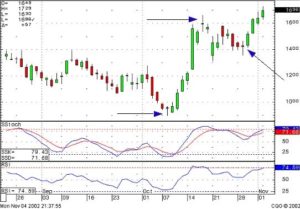
Swing Trading, Doji
Learning the methods to evaluate the signals makes swing trading an easy program to extract profits out of the market consistently. Candlestick signals provide two valuable facets. First, the signal searches locate the high potential profitable swing trades. The searches can be constructed to find the signals that occur at the best positions during a trend movement. Finding a candlestick buy signal when stochastics are oversold or searching for a gap up after a Doji are a couple of examples on how to fully utilize the search capabilities. The second facet is the pinpointing when to get into and out of a trade as explained earlier.
Swing trading concentrates on the alignment of parameters to maximize profits. The candlestick signals add the dimension of allowing successful trades to run, as well as showing when a trade has fizzled. The Candlestick Trading Forum specializes in identifying trades suitable for the swing trading investment community. Please review the services provided on the website. Swing trading lies at the core of Mr. Bigalow’s assertion that the candlestick signals can be traded to produce 10% per month return from the stock market. Join the community of traders that search, research and make available swing trading ideas on our Forum and Stock Chat Room.
